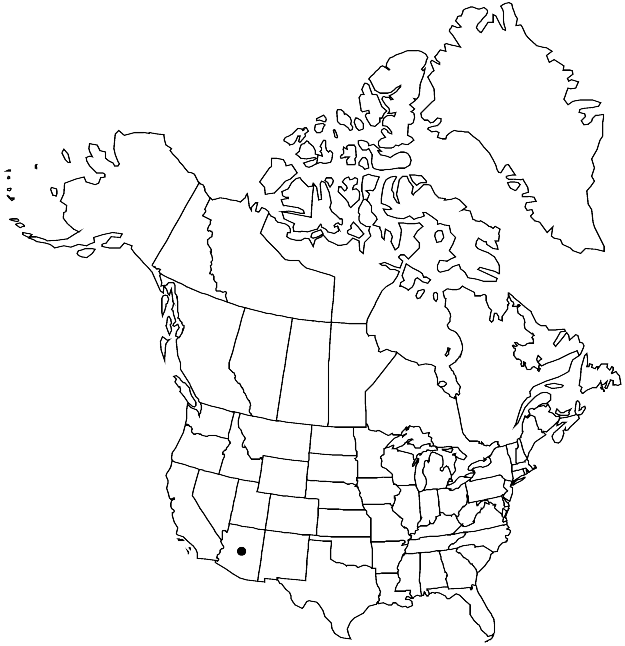Orthotrichum bartramii
Bryologist 28: 76, plate 9. 1925.
Plants to 1 cm. Stem leaves erect-appressed when dry, oblong to oblong-lanceolate, 2–3 mm; margins recurved to broadly revolute, incurved to form channel at apex, serrate at apex; apex cuspidate; basal laminal cells narrowly rectangular, walls thin, not nodose; distal cells 8–13 µm, 1-stratose, papillae 2 per cell, conic, small. Specialized asexual reproduction absent. Sexual condition gonioautoicous or cladautoicous. Seta to 1 mm. Capsule ± emergent or rarely immersed, oblong to oblong-cylindric when old, 1.3–2 mm, 8-ribbed entire length when dry, constricted below mouth when dry; stomata immersed; peristome double; prostome absent; exostome teeth 8, reflexed, densely and evenly papillose; endostome segments 8, not well developed, of 1 or 2 rows of cells, papillose, sometimes coarsely so. Calyptra oblong-conic, smooth, hairy, hairs papillose. Spores 14–24 µm.
Habitat: Bark of Quercus or Populus tremuloides
Elevation: high elevations (3000 m)
Distribution

Ariz., Mexico, Central America (Guatemala).
Discussion
The channeled, cuspidate apex of the mature leaves distinguishes Orthotrichum bartramii from all other species with immersed stomata. Stomata are found in the proximal capsule, half to completely covered by subsidiary cells. The sporophytic characters strongly resemble those of O. tenellum; however, the latter species has non-channeled, incurved leaf apices.
Selected References
None.